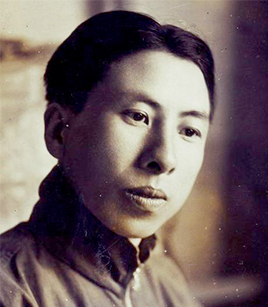Xia Nai

FILE PHOTO: Xia Nai in his youth
The Chinese archaeologist Xia Nai (1910–1985) was outstanding even as a student. He ranked among the best pupils of his grade in high school. At college, his paper for the course “History of the Wei, Jin, Southern and Northern Dynasties” was highly praised by renowned historian Chen Yinque. Mei Yiqi, president of Tsinghua University, said that Xia’s score on the exam for studying abroad with government funding was the “highest in history.” Xia studied Egyptology at University College London. His book titled Ancient Egyptian Beads based on his Ph.D dissertation was regarded by Stephen Quirke as representing “a crucial and long-awaited advance in archaeology, not only for Egypt, but for the study of the past across Africa and beyond.”
What is commendable is that Xia did not blindly follow the arrangements of the school and the regulations of his tutors. Throughout his academic career, he always insisted on his beliefs, neither blindly following nor bowing to authority. After finishing the excavation of Ding Ling, a mausoleum where the Wanli Emperor (1563–1620) of the Ming Dynasty and his two empresses were buried, Xia acknowledged the lack of technology to preserve the excavated bodies and objects at that time. When the prominent scholar Guo Moruo and Beijing deputy mayor Wu Han advocated for the excavation of Chang Ling, the tomb of the Yongle Emperor, Xia wrote a letter to the State Council to prevent such excavation projects. Finally, a new policy was issued to stop excavating any emperor’s tomb except for rescue purposes.
Xia strongly advocated for the introduction of natural science methods into archaeological excavation and research. Under his effort, the first Carbon-14 dating laboratory was built in China in 1965. He was also known as the founder of field archaeology in China. In 1945, during the excavation of the tombs of the Qijia Culture in Gansu, Xia confirmed for the first time from the stratigraphy that the Yangshao Culture in Gansu existed earlier than the Qijia Culture, marking a new starting point for Chinese prehistoric archaeology. Today, many technical methods and terms used in China’s field archaeology were set by Xia, and have been included in college education and archaeological training.
Edited by REN GUANHONG
